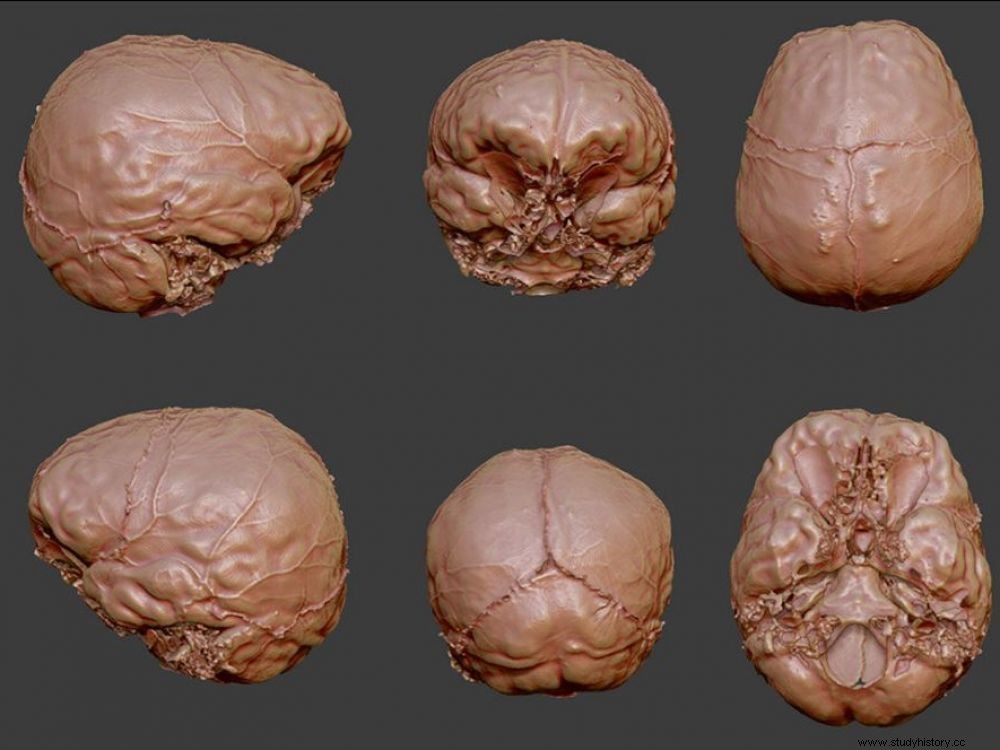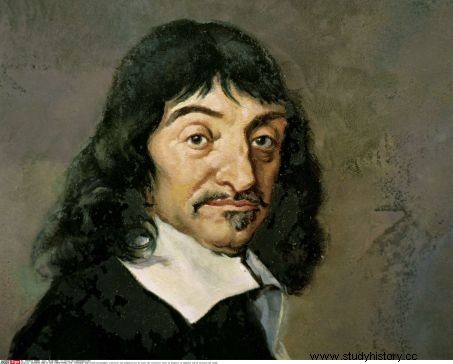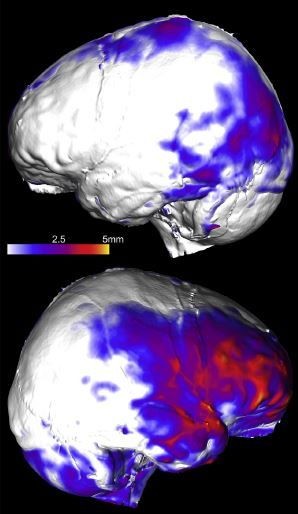The imprint of the brain of René Descartes, a long-disappeared organ, was able to be reconstructed in three dimensions, and allow its analysis.

Anatomical views:3D images of the brain of René Descartes.
Do the brains of geniuses have special features? Are they detectable in their shapes and surfaces? To this question asked many times - especially when cutting Einstein's brain into slices - scientists are once again trying to answer this time by looking at Descartes' skull. Admittedly, the brain of the famous philosopher and mathematician, author of the "Discourse on Method » and died on February 11, 1650 in Stockholm (Sweden), has long since disappeared. But there remains his skull – or reputed to be – preserved for 200 years at the National Museum of Natural History in Paris.

Skull of René Descartes © J.C Domenech, MNHN, Paris.
"In particular, we performed a medical scan, then proceeded to the 3D reconstruction of his endocranium"
The experts therefore carried out various anthropological examinations, as an article published in the Journal of the Neurological Sciences has just revealed. . "In particular, we performed a medical scan, then proceeded to the 3D reconstruction of his endocranium “, thus announced Philippe Charlier, forensic pathologist and anthropologist of the UFR of Health Sciences, in Montigny-le-Bretonneux (Yvelines), to whom we already owe the very media studies of Diane de Poitiers, Richard Coeur of Lion and Henry IV.
"The brain leaves its mark as it develops at the level of the endocranium, the inner part of the cranial vault, but also the base of the skull. We were able to obtain a three-dimensional view of its surface, as well as the meninges, the vessels that irrigate it , says the researcher. We created a 3D digital duplicate of René Descartes' brain " . Results ? Nothing but very normal, if we compare this brain to 102 others… with one small anomaly. "We found a fairly significant asymmetry at the level of Brodmann's area 45*, the one that participates in the organization in space and also in language ", continues Philippe Charlier.

Bilateral differences in the extension of the left and right hemispheres. © Philippe Charlier, Antoine Balzeau, Philippe Froesch.
However, there is no question of making a link between this anatomical particularity and the genius of the author of the "cogito ergo sum" (I think therefore I am). "It is just interesting to parallel this asymmetry with the propensities of the scholar expressed both in his philosophical work and his scientific work in general" , concludes this specialist in pathography, this discipline which aims to highlight pathologies after multidisciplinary study of human remains.

Portrait of René Descartes. © prisma KCA/Superstock/Sipa
In a first analysis of Descartes' skull published in 2014 in the Lancet , the forensic expert had discovered the presence of an osteoma, a benign tumor of the bone that can lead to congestion of the sinuses and headaches. This tumor could have explained the exhaustion of the philosopher towards the end of his life.
